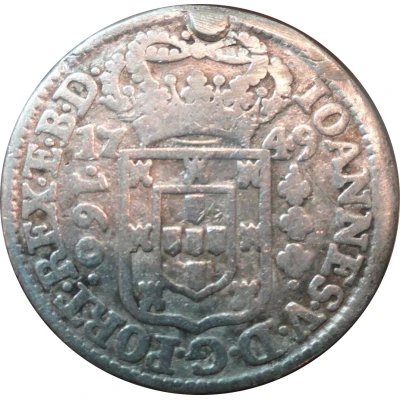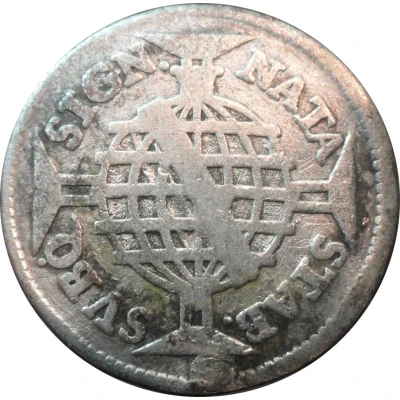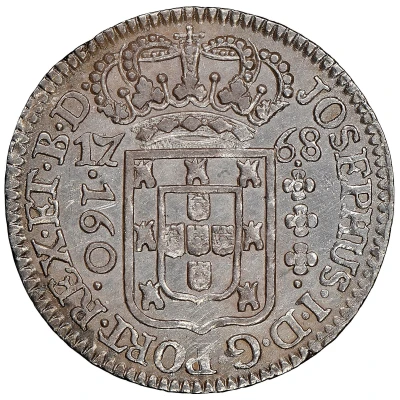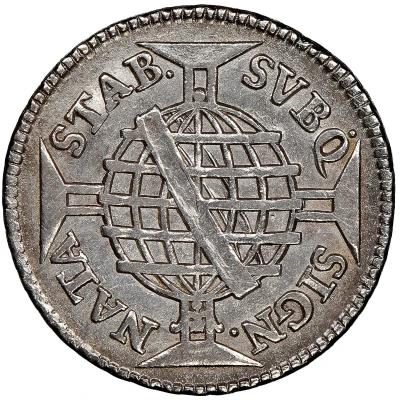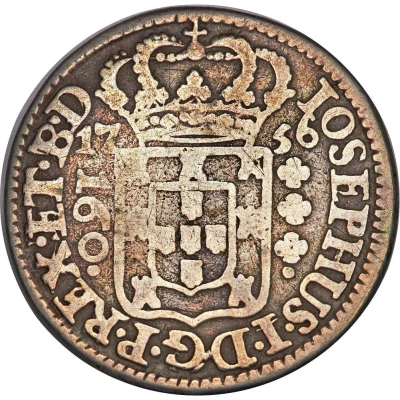
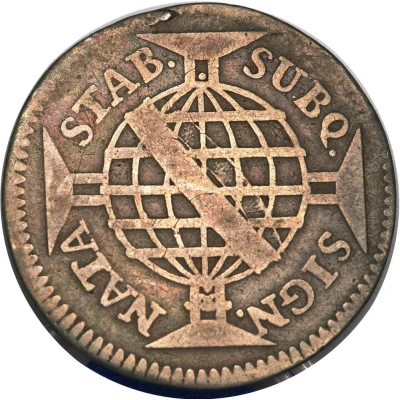

© Heritage Auctions
160 Réis - José I Heavy Type - Bahia, Rio de Janeiro and Lisbon Mints
| Silver (.917) | 4.83 g | 24 mm |
| Issuer | Brazil |
|---|---|
| King | Joseph I the Reformer (1750-1777) |
| Type | Standard circulation coin |
| Years | 1751-1758 |
| Value | 160 Réis |
| Currency | Real (1654-1799) |
| Composition | Silver (.917) |
| Weight | 4.83 g |
| Diameter | 24 mm |
| Shape | Round |
| Technique | Milled |
| Orientation | Medal alignment ↑↑ |
| Demonetized | Yes |
| Updated | 2024-10-04 |
| Numista | N#17012 |
|---|---|
| Rarity index | 83% |
Reverse
Armillary Sphere on Cross of the Order of Christ, superimposed on the letter P. In the spaces between the arms of the cross, the legend: SUBQ. SIGN. NATA STAB.
Script: Latin
Lettering: SUBQ. SIGN. NATA STAB.
Translation:
SUBQUO SIGNO NATA STABILI
(Under this sign it was born and will remain)
Edge
Reeded.
Comment
160 Réis = ½ PatacaKM#168.1; Bentes 214.01 - 1751-R (Rio de Janeiro Mint); REX. E. BRAS. D.; JOSEPHUS / SVBQ; Small Armillary Sphere (13 mm).
KM#168.1; Bentes 214.01 - 1751-R (Rio de Janeiro Mint); REX. E. BRAS. D.; JOSEPHUS / SVBQ; Large Armillary Sphere (15 mm).
KM#168.2; Bentes 209.01 - 1752 (Lisbon Mint); REX. E. B. D.; 2nd Type: IOSEPHUS / SUBQ; Crown with 4 Arches.
KM#168.2; Bentes 209.02 - 1756 (Lisbon Mint); P. REX. ET. B. D.; 2nd Type: IOSEPHUS / SUBQ; Crown with 4 Arches.
KM#168.3; Bentes 212.01 - 1757-B (Bahia Mint); REX. ET. B. D.; 1st Type: IOSEPHUS / SVBQ; Extremely Rare, Only 3 Pieces Known.
KM#168.4; Bentes 213.01 - 1758-B (Bahia Mint); REX. ET. B. D.; 3rd Type: JOSEPHUS / SVBQ.
Interesting fact
One interesting fact about the 160 Réis - José I (Heavy Type - Bahia, Rio de Janeiro and Lisbon Mints) 1751-1758 coin from Brazil is that it was minted during a time of great economic and political change in Brazil. The coin was introduced during the reign of King José I of Portugal, who ruled Brazil as a Portuguese colony. The coin was used as a standard circulation coin and was minted in three different locations: Bahia, Rio de Janeiro, and Lisbon. The fact that it was minted in multiple locations indicates that there was a high demand for currency in Brazil during this time period, likely due to the growth of trade and commerce in the region. Additionally, the coin's silver content and weight suggest that it was a valuable and widely used currency during its time.
